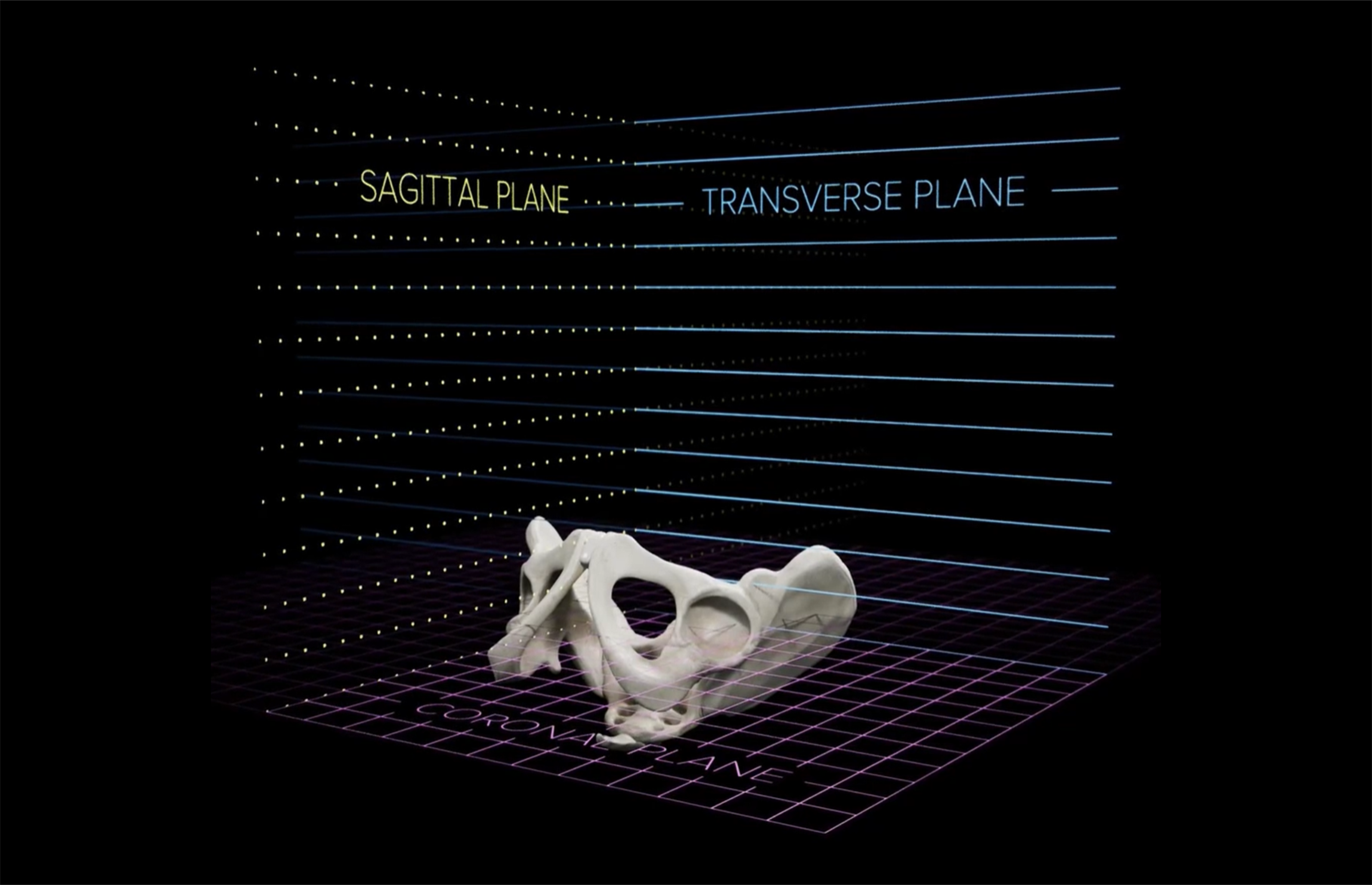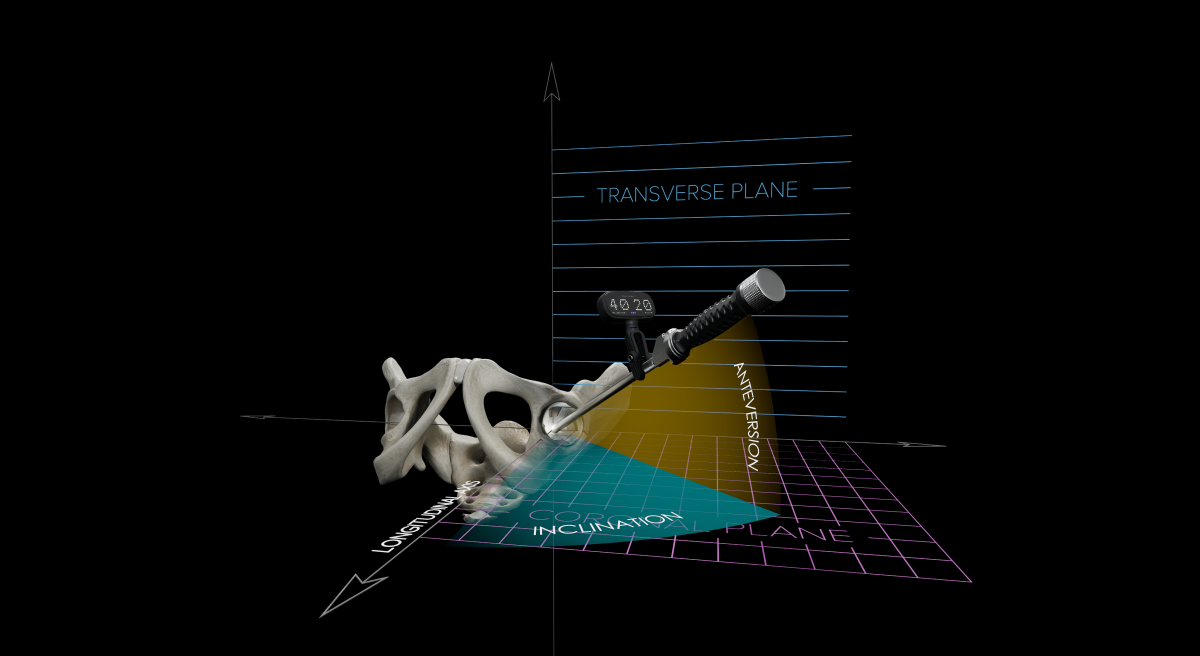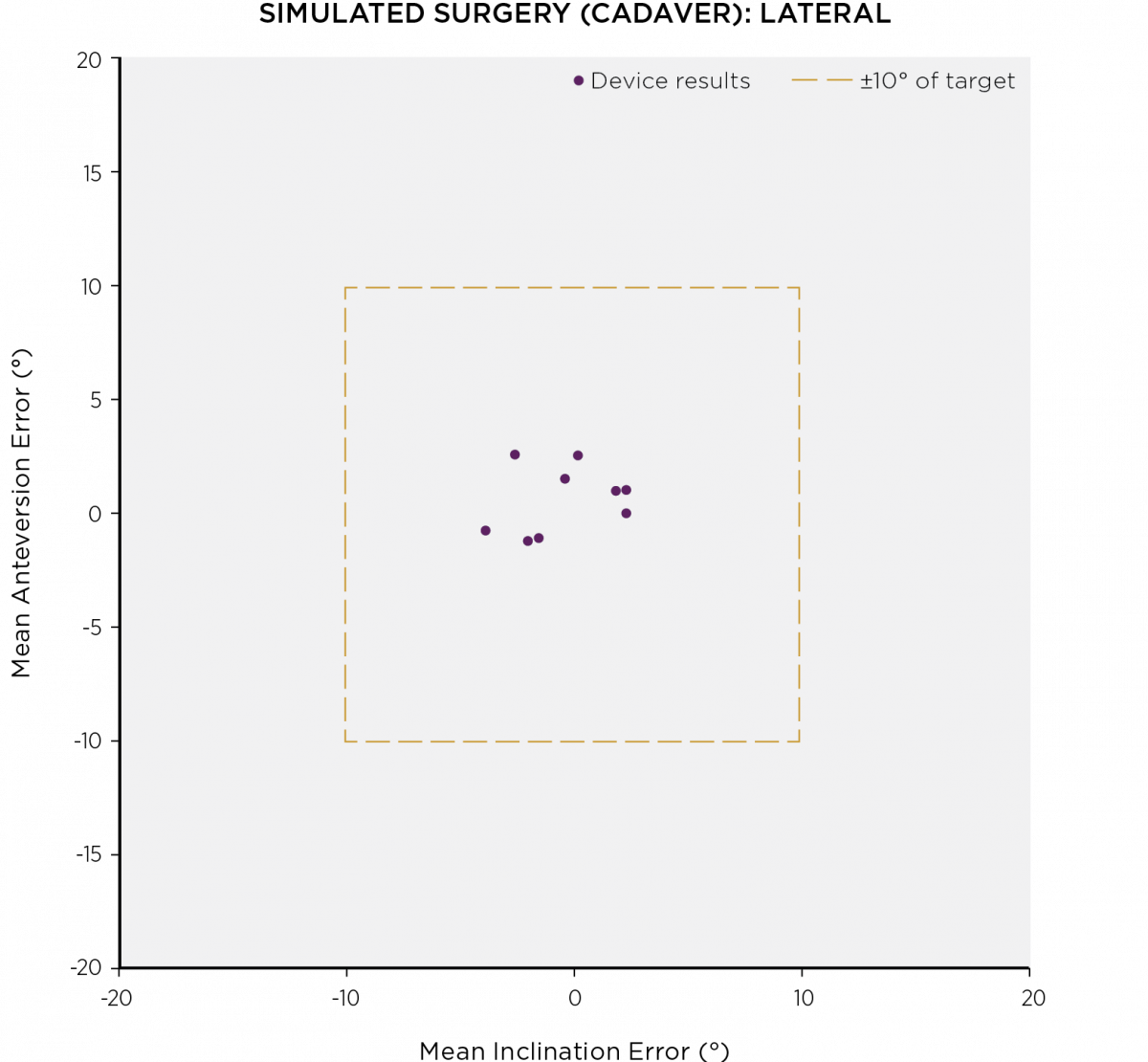Accuracy of the Navbit Sprint System
Accuracy of the Navbit Sprint using simulated surgery on cadavers suggests the system has excellent accuracy and precision.

Accuracy of the Navbit Sprint using simulated surgery on cadavers suggests the system has excellent accuracy and precision.

Computer navigation can be used in Total Hip Arthroplasty (THA) to improve the accuracy of the acetabular cup component orientation 1-5. The Navbit® Sprint system is a palm-sized navigation device that provides the surgeon with a real-time measure of the orientation of the acetabular cup. The Navbit Sprint is small and accurate, through using an inertial navigation system and patient registration which does not rely on anatomical landmarks.
This article summarises the evaluation of the accuracy of the navigation system and end-to-end process of the Navbit Sprint using simulated surgery on cadavers which found:
Overall, the Navbit Sprint System is an accurate navigation device that provides the surgeon with intraoperative acetabular cup inclination and anteversion angles during THA.
To provide surgeons with confidence in the accuracy of the Navbit Sprint system, the device was challenged-tested in a variety of ways. The accuracy of the navigation system was assessed using bench testing. The accuracy of the registration process was assessed through testing the end-to-end surgical process, firstly in a simulated surgical setting using cadavers and then in a clinical setting with patients. This article covers accuracy in a simulated surgical setting using cadavers.
The accuracy of the entire Navbit Sprint system (device and process) was assessed during simulated surgical workflows, performed by surgeons on cadavers. The performance of 9 Navbit Sprint devices was assessed. The 6 surgeons performed a total of 12 THAs on 6 cadavers, with 3 Navbit devices used concurrently per surgery. Half of the surgeries used the direct anterior approach, and half used the lateral approach. The level of experience of the surgeons ranged from advanced orthopaedic trainees through to fellowship-trained hip orthopaedic surgeons. The intraoperative measurements of the final cup orientation using the Navbit Sprint were compared to the inclination and anteversion angles calculated from a post-operative computed tomography (CT) scan.
Figure 1: Angles of Inclination and Anteversion

For both supine and lateral patient positions, excellent accuracy was achieved by the Navbit Sprint system relative to the post-operative CT scan measurements. For supine registration, the mean error in inclination was -0.6° (SD = 1.4) and the mean error in anteversion was -2.5° (SD = 1.8).

For lateral registration, the mean error in inclination was 0.3° (SD = 2.8) and the mean error in anteversion was 2.9° (SD = 4.4). Illustrated in Figures 2 and 3 all devices were within ±10° of the target. Compared with the acetabular cup orientations typically achieved during surgery these results suggest that the Navbit Sprint system has excellent accuracy and precision.

The Navbit Sprint system uses a novel navigation system and a novel method of registration of the patient. The accuracy of the Navbit Sprint system was assessed using simulated surgeries on cadavers.
The accuracy of the device and registration process were assessed during cadaveric surgery. The measurements were accurate and precise. The results indicated that using this device would result in acetabular cup orientations within ±10° of the target, compared with the much less accurate and precise results generally seen in THA surgery. Therefore, the Navbit Sprint device and registration process provide the surgeon with accurate intraoperative measurements.
Simulated surgery assessed the entire Navbit Sprint system and process. Surgery includes error from the navigation system and the registration process, as well as variability that would arise from other sources such as patient anatomy and surgical method. With all of these errors included, the Navbit Sprint was able to generate accurate intraoperative measurements.
The Navbit Sprint System is an accurate navigation device that provides the surgeon with real-time acetabular cup inclination and anteversion angles during THA.
The Navbit Sprint system uses an inertial navigation system and a novel method of registration of the patient which does not rely on anatomical landmarks.
Read more